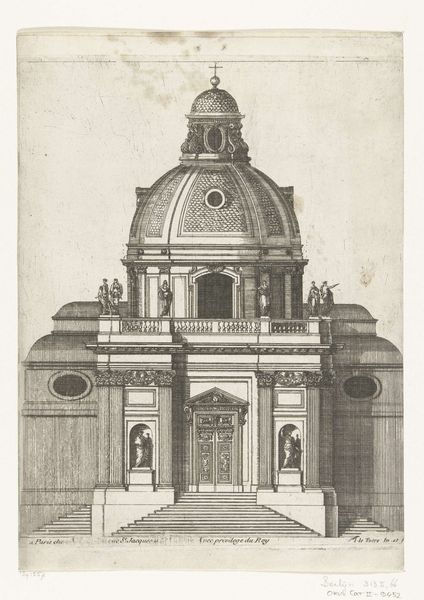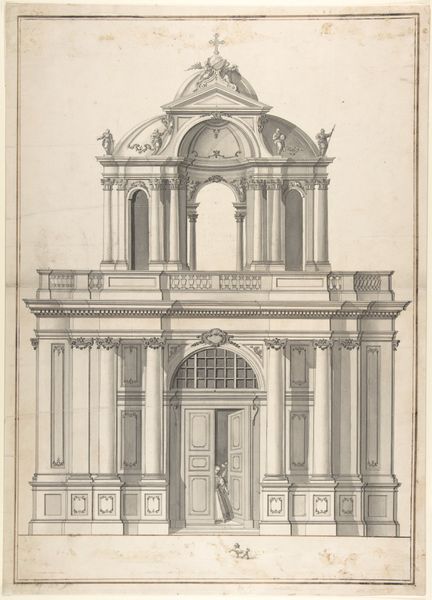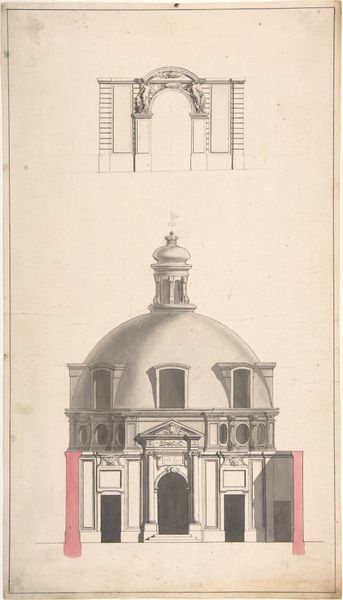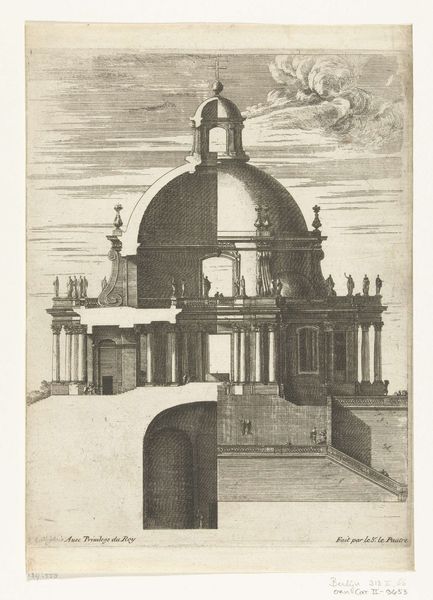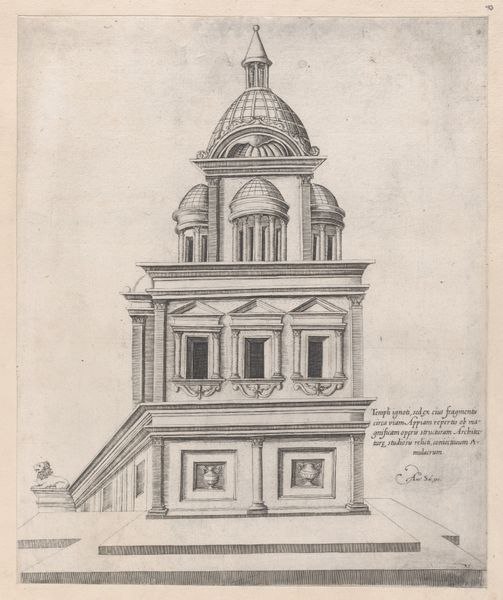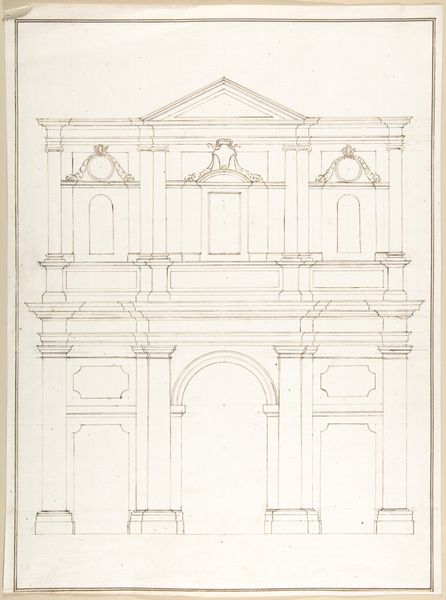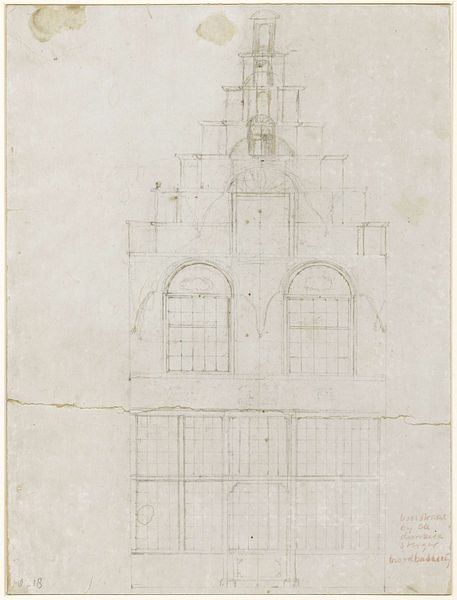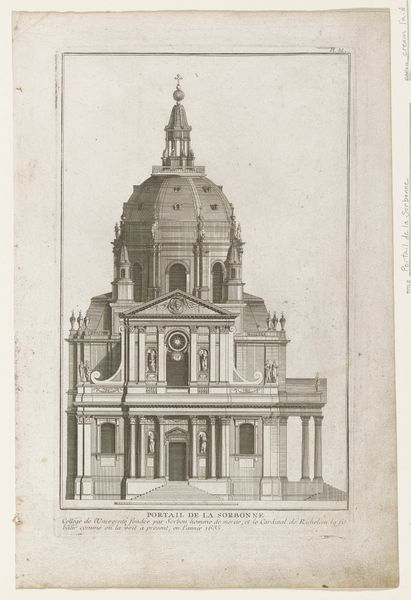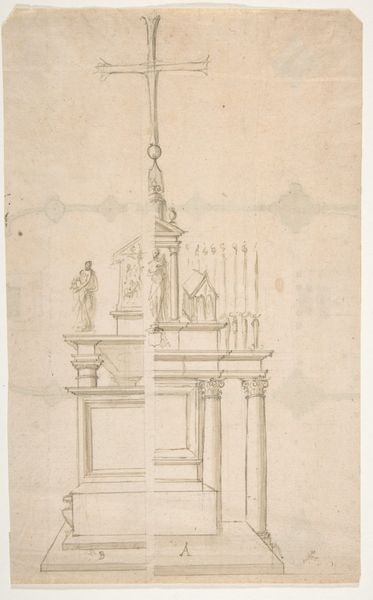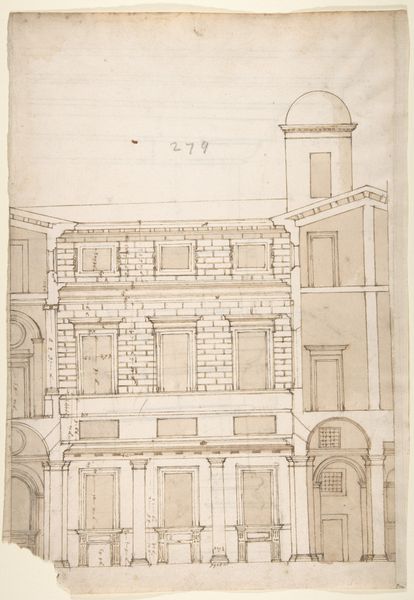
drawing, paper, ink, architecture
#
drawing
#
baroque
#
dutch-golden-age
#
perspective
#
paper
#
ink
#
geometric
#
line
#
cityscape
#
architecture
Dimensions: height 257 mm, width 215 mm
Copyright: Rijks Museum: Open Domain
Curator: Before us is a detailed drawing by Daniel de Blieck from 1652, titled "Ontwerp voor de Oostkerk in Middelburg," which translates to "Design for the East Church in Middelburg." It’s rendered in ink on paper, offering a precise elevation of the proposed church. Editor: The architectural drawing looks hauntingly peaceful, I feel. There’s such delicate precision in the linework that, even though it depicts a grand structure, it possesses a remarkable tranquility. It invites contemplation on how societal structures relate to personal emotional experiences, which perhaps also relate to the personal in times of organized religion? Curator: Absolutely. The stark rendering focuses our attention not only on the building, but on its social role and implications. Note the way perspective is employed. The elevation is almost like an accusation, or at least, a social assessment in faith? We must understand the power of the Dutch Reformed Church in the Golden Age of the Netherlands. Dissent and religious disputes weren't uncommon; placing the building within the framework of the sociopolitical landscape helps unlock layers of meaning. It certainly feels oppressive somehow. Editor: I find myself particularly drawn to the dome – its symbolism is incredibly rich. The dome, as a symbol, suggests both heavenly aspirations and earthly power, representing the meeting point between the divine and the temporal, like the bridge between faith and existence itself. It is amazing how we can feel the emotional resonance between the architectural object and the viewers just by this ink. Curator: It's also fascinating how de Blieck employs the linear quality of the line as more than just geometric or representational but as an agent of emotional meaning, like a script for living during a specific intersectional period in history. But did the design get realized? Editor: From a visual point of view, it's interesting to analyze the relationship of space with symbolic shapes. The interplay between these formal aspects allows for an ongoing and emotionally charged experience. These design patterns show social narratives, whether that was the goal, I wonder? Curator: De Blieck has truly provided us a tool that encapsulates architectural intent and its surrounding milieu, from which to explore cultural symbolism and sociopolitical identity during a very rich time in the Dutch Golden Age. Editor: Yes, it definitely highlights our potential for cultural storytelling, even after centuries.
Comments
No comments
Be the first to comment and join the conversation on the ultimate creative platform.


